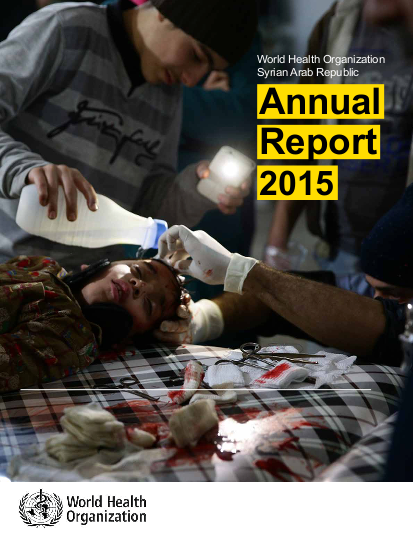
BY THE END OF 2015, THE HUMANITARIAN situation in Syria had significantly deteriorated, and no political solution was in sight. Civilians continued to bear the brunt of the crisis. Parties to the conflict continued to impose sieges and blockades. Civilians were unable to leave besieged areas, and aid agencies were unable to enter. Malnutrition rates increased, especially among children under five years of age. There were widespread attacks on health personnel and health care facilities. Around 25 000 people were wounded each month, many of them severely. Almost two thirds of the population had no access to safe water, increasing their risk of waterborne diseases. More than 1.2 million people were internally displaced during the course of the year. These numbers are staggering.
Against this backdrop, WHO continued its work to alleviate the health impact of the crisis and support the resilience of the Syrian people. Working from its hubs in Damascus, Amman and Gaziantep under the “Whole of Syria” approach endorsed in UN Security Council resolutions, WHO’s emergency health response aimed to reach Syrians in all parts of the country, including hard-to-reach and besieged areas.